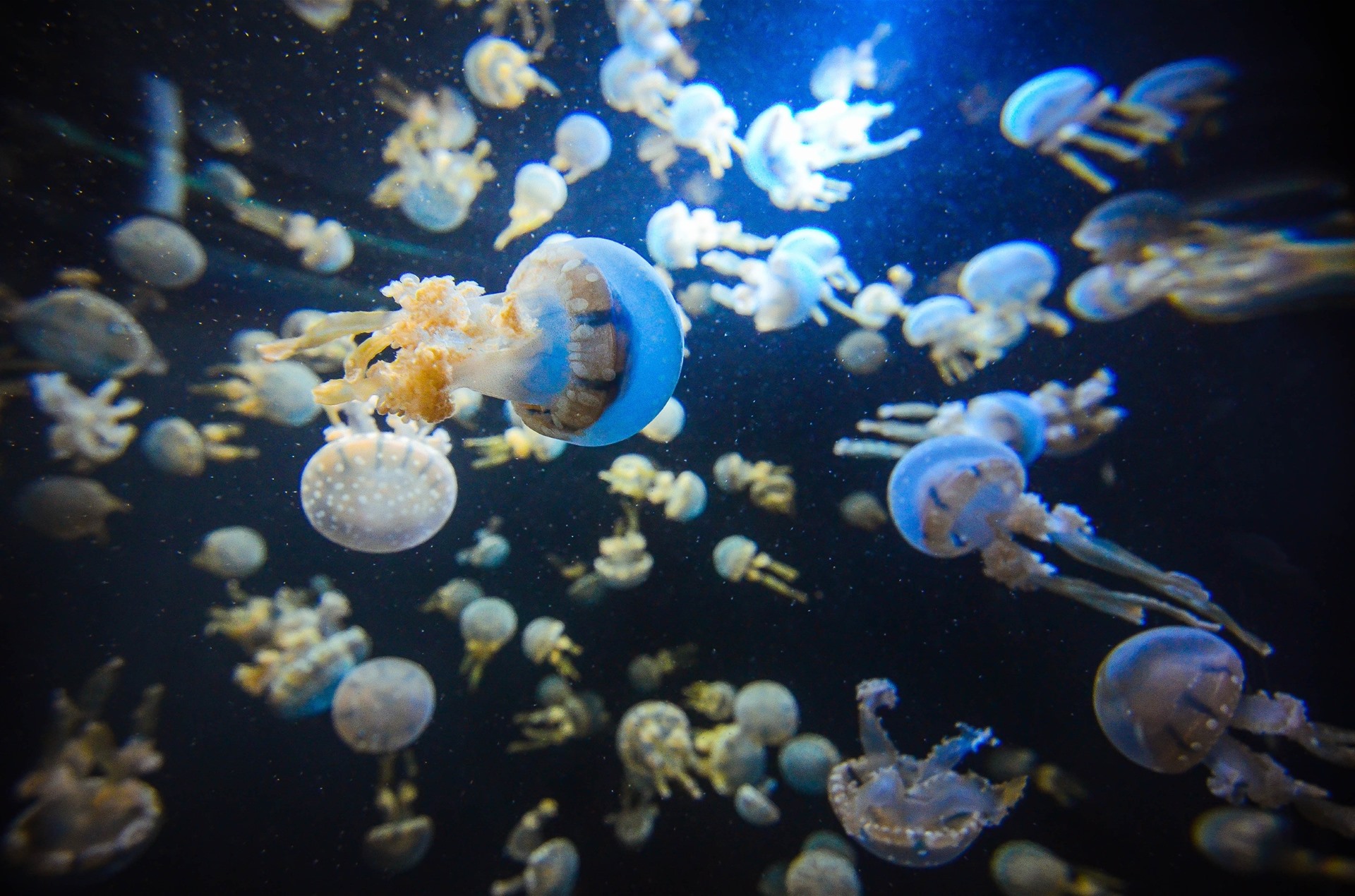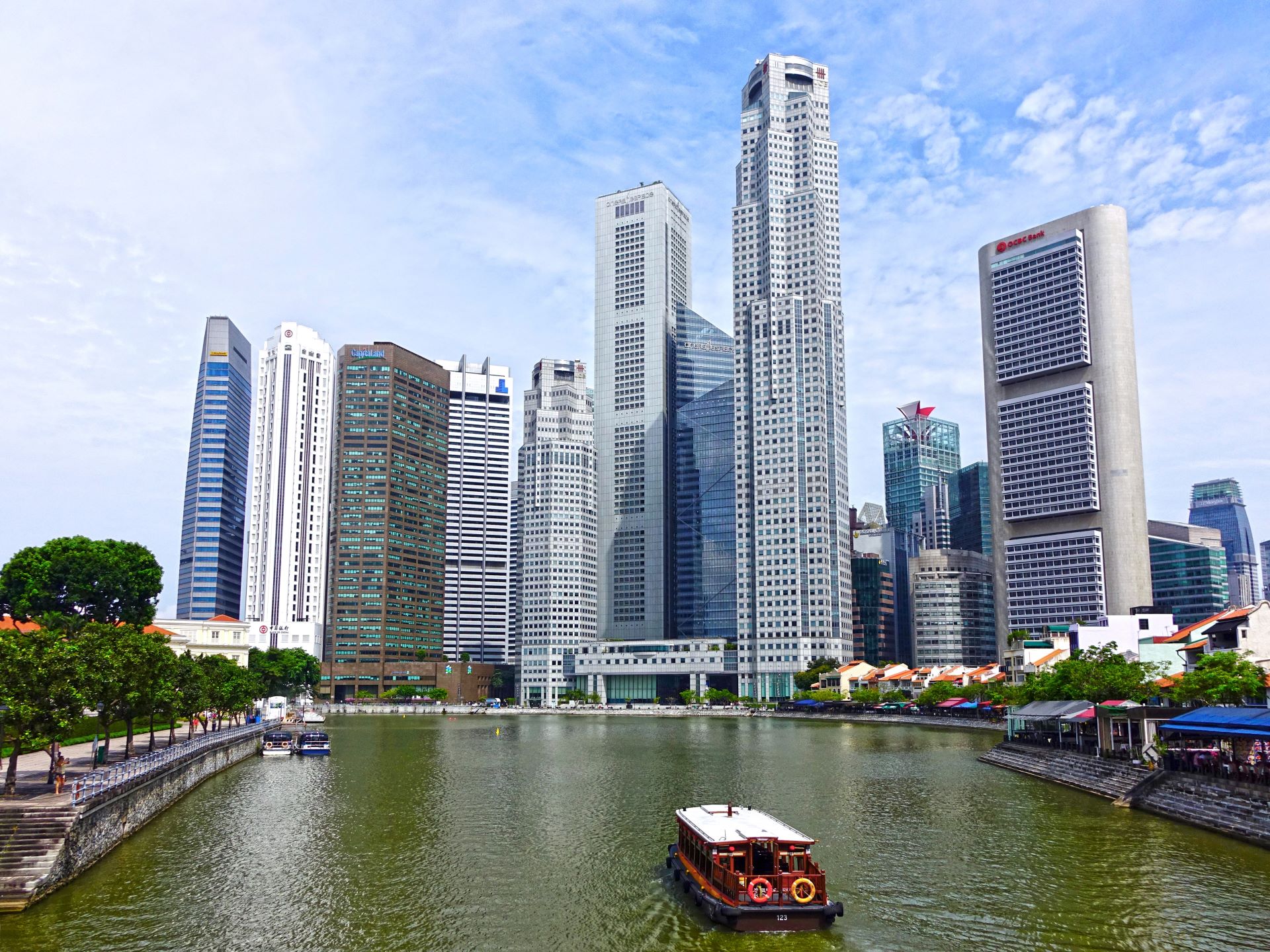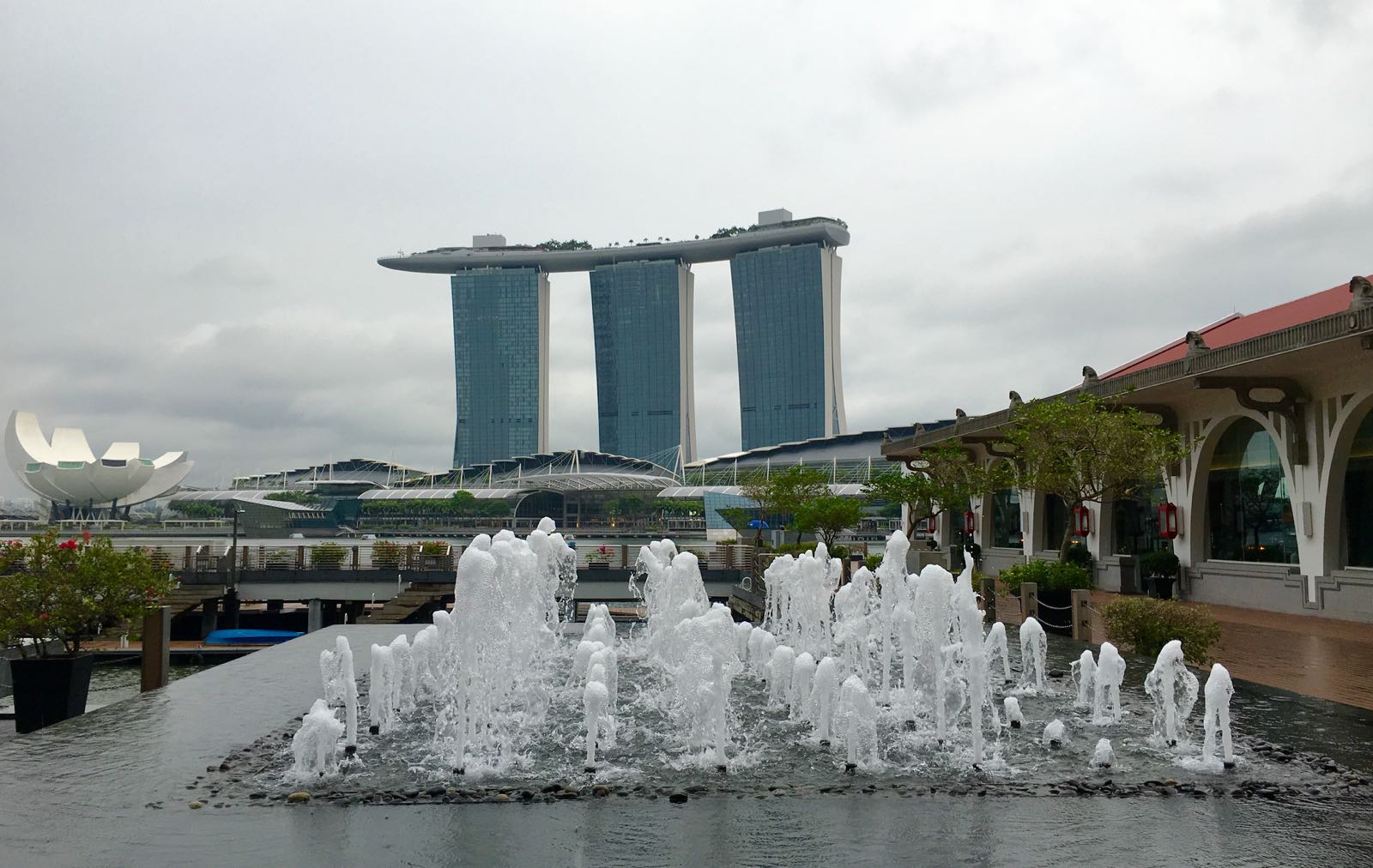Singapore’s Water Story
A streamflow towards self-sufficiency and sustainable development
From water scarcity and rationing, Singapore has come a long way in coping with its water security and water management issues and has now
become an International Water Hub. Singapore’s water story points at the importance of constant innovation and investment in new technologies that use and reuse all available resources as many times as possible.
Water security is identified as one of the threats emanating from failing global efforts to stop climate change. As of 2015, two-thirds of the world’s population will be affected by water scarcity in the coming decade if no impactful action is taken. Ambitious action requires role-models, and Singapore’s water story is worthy of study as an example of a successful development policy. Singapore dramatically reduced its external water supply dependency while employing regulatory instruments, pro-active industrial support policies and direct engagement with water consumers. This a story which should serve as an example to for Singapore’s neighbours to follow, as well as the increasing number of countries facing water challenges in years to come.
Singapore’s historical water challenges
Singapore is a tiny city-state nested within the strategic crossroads of Asia. While lacking in natural resources, Singapore succeeded in becoming a regional power house by using a smart mix of efficient governance and an open attitude to foreign investors. The Republic of Singapore is a small and densely populated tropical urban island in South East Asia² with only 718 km² in territory and a population of 5.4 million. While receiving plentiful rainwater, reaching up to 2,400 millimeters annually, the city-state has been facing historically severe water shortages. These are due to three key aspects; i) the limited land available for water collection and storage; ii) the complete lack of groundwater resources and natural endowments; and iii) land constraints caused by competing uses: housing, industry and business.

However, in order to understand Singapore’s water challenges, we need to look back to its foundation in the 19th century. Singapore was founded in 1819 by Sir Stamford Raffles of the British East India Company. When he landed in Singapore, water from inland streams and self-dug wells was enough to maintain the island’s limited population, but as population and trade-related activities increased, more water was needed to sustain the city’s growth. This led to the construction of a number of reservoirs,³ as well as the signing of agreements with the Government of the State of Johor (Malaysia) to transport water to ensure consistent supply over the long term. Yet, these agreements did not succeed in guaranteeing water security, as Singapore faced water rationing in 1961 and 1963 due to inadequate infrastructure and water management. As a response to these crises, the Singaporean Government established the Public Utilities Board (PUB) as the national water authority, which became responsible for the country’s water management activities and the management of these water agreements.
When Singapore separated from Malaysia in 1965, these agreements remained, but held Singapore in a precarious position. The country only had three reservoirs, covering 20% of its needs and therefore still relied heavily on Malaysia as the country’s single supplier of water. This being so, the agreements have always been the source of political tension and geopolitical stress between the two countries. Thus, water supply and the push for water independence became a strategic priority for the Singaporean government.
In the 1970s, water management entered a new area of transformation. Institutions were restructured, legislation was revised, and the public was finally educated about water management and encouraged to directly engage in water conservation activities. The government began to move on a route to diversify the country’s water supplies to decrease dependence on Malaysia. This included the expansion of existing catchment areas and reservoirs, as well as the adoption of control strategies and measures to monitor and regulate water pollution problems. In 2001, the PUB was given full control over the entire water apparatus, and in 2003, the country began a program of water recycling. In 2005, the first desalination plant was built, and in 2008, the country began urban storm water collection.
A world leader and international water hub
Singapore currently consumes about 1.36 billion liters of water per day. The long-term agreements signed in 1961 and 1962 with Malaysia gave Singapore the drawing rights up to 391 million liters per day until 2011 and up to 1,136 million liters per day until 2060. Negotiations on the possible extension of the water agreement are now stalled as Singapore has asked for an extension beyond 2061. Malaysia has agreed, but at a much higher price: 15 to 20 times greater than their present price of water.
The Government has identified the water industry as a key growth industry for the country.
As a result, Singapore has developed a new strategy for increasing water security and self-sufficiency, which includes a wide range of elements such as: an efficient water management system, the formulation and implementation of new water-related policies, heavy investments in desalination and extensive reuse of wastewater. In its management of the entire water system, the PUB has developed and implemented a holistic policy approach, covering the whole water cycle, from storm water management, to desalination technologies, as well as demand management through public education and awareness programs.
Building water resilience for the future
Tough challenges often lead to inspiring opportunities. While many developed nations around the world take water for granted, the example of Singapore forces a change in perspective, especially in times of urbanization and climate change. With a history of water stress, the country grasped the necessity for a diverse, secure and reliable water supply and turned it into a world-class innovation driven water industry. Strategically set to address water challenges at home and worldwide, Singapore has become a Global Hydrohub, fostering a favourable climate for public and private sectors to engage in R&D collaborations.
Growing an ecosystem that drives breakthrough water innovation
Ambitious goals and effective policy instruments have been essential drivers for transforming Singapore into today’s vibrant global cluster of innovation across the entire water value chain.
With an allocated total of 470 million SGD to fund innovation and capability development in the water sector over the last ten years, the Singapore government has demonstrated a strong commitment in nurturing the development of the local water industry (PUB, 2016).

Not surprisingly, within the same period, the number of Singapore-based local and international water companies more than tripled from 50 to about 180, generating around 2.2 billion SGD in value added for the national economy. In addition, the number of public and private R&D centers has increased from three to 28 (PUB, 2016), with Singapore’s top universities NUS and NTU being recognized respectively as #1 and #2 universities in water research globally.
A recent additional 220 million SGD boost to fund R&D activities over the next five years is expected to further consolidate Singapore’s global leadership position. The updated national water policy that serves now a dual purpose of addressing the country’s water shortage and the
export of cutting-edge water technologies under a made-in-Singapore label c.
Water technologies made in Singapore
Beyond numbers, Singapore’s supportive policy approach has created a dynamic private water sector comprising of global international and local players, as well as home-grown start-ups that have materialized ideas into technological innovations for the future. Self-proclaimed a “Living Laboratory”, Singapore has enabled the conceptualisation of new technologies, and has become an early adopter of these technologies, validating their efficiency. More precisely, the Public Utilities Board (PUB), country’s national water agency, opened the doors of its venues and facilities to provide industrial test-bedding and implementation sites for innovative products, processes, systems and services. As a result, Singapore built up expertise and excelled in membrane development, water reuse and desalination.
By combining and adopting the expertise in membrane development and water reuse, Singapore was able to close its water loop in 2003. The production of NEWater – high-grade reclaimed water, which became a hallmark of PUB’s efforts, meets up to 30% of country’s water needs. The source of NEWater is treated used water, which is put through a process of microfiltration, reverse osmosis and ultraviolet disinfection, to produce ultraclean reclaimed water.
By combining and adopting the expertise in membrane development and water reuse, Singapore was able to close its water loop in 2003.
Following the success of NEWater, PUB introduced desalinated water in 2005. Despite the desalination process being different than water treatment and purification processes, membrane technologies played a vital role.
Home-grown companies such as Memstar, NanoSun and global player Hyflux have enjoyed public financial and technical support to develop and sharpen their membrane-based solutions and take them onto the world stage. As a result, Hyflux, having built two desalination plants in Singapore, has gone on to build one of the world’s largest seawater reverse osmosis desalination plants in Algeria.
By challenging the boundaries of traditional water management across the world, the average annual value of projects overseas secured by Singapore companies has increased from 340 million SGD (2004-2005) to 1.4 billion SGD (2006-2012). Last year alone, Singapore companies exported their capabilities at an overall value of more than 1 billion SGD.
The future is now
One of the lessons from Singapore’s water success story is that pushing for greater R&D and innovation in sustainable technologies certainly pays off. Particularly in times of climate change and resources depletion, thoughtful policies and incentives can be strategically implemented to balance the needs of the industry versus overall economic results, social benefits and the environment.
A model for sustainable urban water management for cities around the word, Singapore brought promising outcomes and knowledge resources that few utilities in the world can pride on. But most importantly, by recognizing early enough the true value of available and reliable clean water, it equipped itself to tackle one of the greatest challenges of our times: building water resilience for the future.

In 2006, $330 million was committed to fund innovation and capacity development, which were topped up in 2011 with an additional $140 million. More recently, the Singaporean water industry has received an extra 200 million SGD (148 million USD) in research and development funding to be used over the next five years. Tthe funding will come from the National Research Foundation (NRF) under the Singapore’s Research, Innovation and Enterprises (RIE). Besides making sure that country meets its national water needs, these funds will also contribute to the flourishing and growth of the overall national water industry, making Singapore a world class and international Water Hub.
In more recent years, the drive of opening markets through the creation of competitive local environmental and water industries has led the Ministry of Environment and Water Resources (MEWR) to establish the Environment & Water Industry Development Council (EWI). The EWI works with stakeholders, such as public sector entities and academia to support R&D for new water technologies, encouraging them to engage in basic and applied research to develop and create new, innovative practices in water management. In addition, the EWI is also tasked to facilitate cross-sector coordination among government agencies involved in water management in order to prevent any potential conflicts of interest across sectors.
Singapore is increasingly recognized as the preferred hub for regional water management and water scarcity issues in Asia. The Asia Pacific Private-Public Partnerships (P3) Incubation Hub (AsiaP3Hub) was created with the support of World Vision International and the Singaporean government to develop and incubate new business models for deployment in developing countries in the region.
BOX: Asia P3 Hub
Launched in July 2016, Asia P3 Hub (public-private-people partnerships) brings together public and private sectors to facilitate market-driven solutions for development and humanitarian opportunities. Based in Singapore and hosted by World Vision International, the Hub’s initial focus is on water challenges in Asia Pacific. Visualized as a shared platform for co-creation, this collaborative space is designed to share resources and strengths across public, private and civil society sectors to encourage creative dialogue, and spark new partnerships and alliances for shared value creation and project implementation. Alongside brokering and managing new partnerships to drive these innovative market-based solutions, Asia P3 Hub will provide a platform for tri-sector learning and collaboration.
The initial theme of AsiaP3Hub is: water, sanitation and hygiene. The Hub will harness the competitive advantage, depth, breadth, energy and resources of not only World Vision, but also of the many stakeholders across the public and private sector, and civil society focused on achieving the Sustainable Development Goals (SDGs). The Hub will also leverage on Singapore’s strategic geographical location and its position as a leading hydro-hub in Asia Pacific to achieve shared value creation across different sectors.
Today, Singapore’s water industry is thriving. The country is home to about 180 water companies, representing the entire value chain of the water industry ranging from upstream manufacturers to system integrators, downstream players and project developers. The water industry currently contributes more than 2.2 billion SGD to Singapore’s gross domestic product and has created over 14,000 jobs, which the Government aims to increase to 15,000 by 2020.
What is the secret to Singapore’s success?
What makes the case of Singapore unique is that its approach to water independence does not rely solely on the construction of physical infrastructure. Singapore’s strategy focusses on the creation and enforcement of a proper legislative framework, which includes correct water pricing, public education and a national research and development expertise. This challenge has motivated the city-state to transform the potential water crisis into an opportunity, establishing Singapore as a world leader in innovative, sustainable water technologies and management practices. The key ingredients to Singapore’s success:
The water industry currently contributes more than 2.2 billion SGD to Singapore’s gross domestic product and has created over 14,000 jobs.
First, an emphasis on supply and demand management. Singapore has always used a holistic approach when managing and dealing with its supply sources. Even when importing water from the neighbouring Malaysia, Singapore has always looked at its own available resources and namely at ways of protecting them both in terms of quality and quantity, while also at expanding them through innovative water management techniques such as desalination, re-use of waste water, etc. Similarly, the demand side of water management plays an important role through the promotion of water conservation. This has been done through economic mechanisms, such as pricing adjustments and tariffs settings, as well as through widespread engagement, education and mobilisation of the community. National businesses and industries are encouraged to certify their buildings, and a water efficiency labelling scheme helps consumers choose efficient water appliances. The result is that citizens are generally educated on good water saving habits.
Second, the exemplary performance, transparency and accountability of the Singapore case is an emblematic example of how water management in a country can only be as effective and as efficient as its management of other related and connected sectors, such as energy, agriculture and industry. The PUB has a high level of autonomy and has always been run by highly professional and proactive political leadership that take the water issue seriously. Compared to other Asian states, Singapore’s ruling class can be proud of having a strong anti-corruption mentality, as well as competent and prepared professionals and experts at all levels of the water industry. The PUB trains its staff for their professional and personal development, and rewards good performers to ensure overall organisational performance and growth.

Finally, the thriving national water industry is an emblematic example of the importance of investing in new and innovative technologies that can reuse all resources as many times as possible. Singapore made a key policy decision to invest heavily in R&D, with the view of building a robust, diversified water supply with a sustainable cost base, without exposure to geopolitical stress. This R&D transformation has encompassed the entire water value-chain, from the first level of idea conceptualization and basic research, to more advanced levels of applied research, demonstration and commercialization. The country’s PUB closely collaborates with both local and international partners from the private and public sectors alike and supports cross-disciplinary research in sectors like energy, which are believed to have a close relation and direct impact on the water industry. The PUB has also found ways to consistently inspire and encourage community stewardship of the nation’s water resources. This includes, for instance, an award-system for granting recognition and special prices for individuals and organisations who make an outstanding contribution to the water cause. Some examples include the Watermark Award, Gold Certificates for Water Efficient Buildings, the Friends of Water.
What can other countries learn?
Singapore’s water story is inspiring at a crucial time for policy makers facing water issues in many countries across the world. Water security is one of the global consequences of climate change, which we must also urgently address. The Middle East and parts of South Asia will face serious water scarcity because of changing weather patterns, compounding the challenges that these developing countries and emerging economies already face surrounding water management as well as other issues of public works. Lack of indigenous water resources, coupled with growing demand as a result of economic and demographic growth are some of the mounting pressures facing these nations.
Singapore’s example confirms that simple measures combined with diligent implementation can transform the national water landscape with a country in the space of only a few decades. Targeted policies and regulations, working closely with consumers, and the construction of national industry is what made Singapore succeed, despite its considerable challenges and limited resources. However, what makes this case truly exceptional, is the efficient and transparent governance which was able to bring idea to reality. This is the most important lesson that Singapore’s water story can teach us.